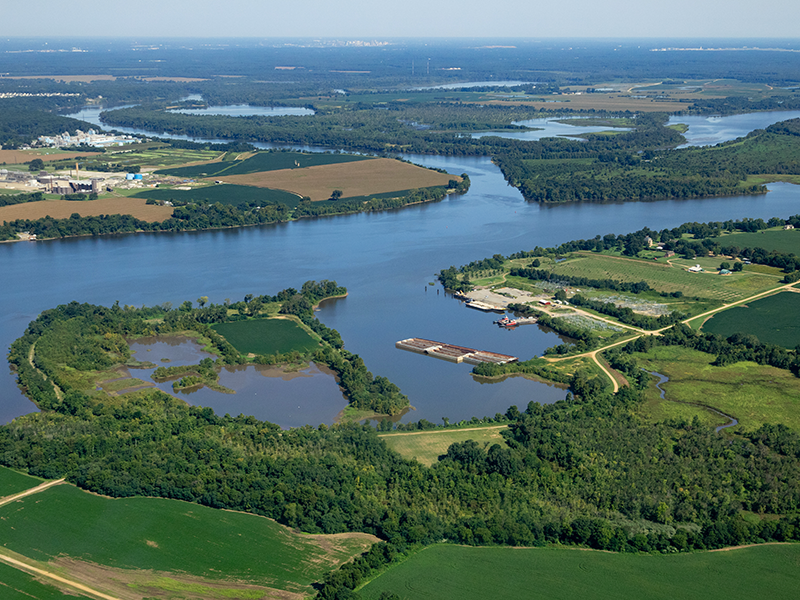“Albina Triangle.” Green Streets RSS. The City of Portland, Oregon, n.d. Web. 13 Oct. 2016.
Regulatory compliance has been the goal for stormwater management since combined sewer overflows became the focus of regulation in the 1980s and Municipal Separated Storm Sewer (MS4) permits in the 1990s and 2000s. The compliance threshold has been to demonstrate that a community is doing the maximum extent practicable (MEP). This basically comes down to checking off long lists of actions and satisfying regulators that the municipality is making an honest effort, within their budget and technical limitations. Fact is, regulatory compliance is worth creating a stormwater department within public works, but it isn’t worth real investment that competes with roads, schools and public health needs within a community.
After two decades, this is changing. In the 1990s and 2000s tens of thousands of Total Maximum Daily Loads (TMDLs) were created, identifying why streams, lakes and beaches were still not meeting standards for being fishable and swimmable. Now regulators are seeing MS4 permits as their last great opportunity where they have authority to require pollutant load reductions. In addition, third-party lawsuits increasing the pressure for municipalities to meet water quality standards in runoff to streams, lakes and beaches.
The initial price tags for meeting these requirements are astounding:
- Lake Tahoe – $1.5 billion to meet a 15-year interim target known as the Clarity Challenge.
- San Diego Co-permittees – $4 billion to implement Water Quality Improvement Plans (WQIPs) to meet bacteria and metals requirements over the next 17 years.
- Los Angeles Municipalities – $20 billion across 89 municipalities to implement two types of Watershed Management Plans (WMPs).
Yet with all the saber rattling from regulators, stormwater management remains an unseen public service. The specter of regulation will not motivate the necessary creativity and investment to address the problem.
The solution comes in grasping the compliance paradox for stormwater. Regulations and settlement agreements may focus engineers and executives on stormwater, but the solution must transcend compliance and link our stormwater to what people care about – water supply, recreation, public health and jobs. Stormwater managers need to inspire voters and decision makers by speaking to the value they create for the municipality, not just how they are a defense against state and federal bureaucrats. With a strong mandate stormwater managers can increase the standing of stormwater managers within the municipal pecking order, AND integrate stormwater improvements into multiple agendas.
The voting public may connect that rain ends up in their local stream (if the stream isn’t buried). And thank goodness, because that means it’s not flooding their house! At least in Southern California coastal communities, beach report cards and education campaigns create the link between stormwater runoff, human health and beach recreation. Our clients, including a group of co-permittees in San Diego, are now taking this a step further by linking water quality to the local economy by developing a cost benefit analysis for reducing sources of bacteria that impact popular beaches. Dealing with stormwater as a resource to increase groundwater supplies and prevent saltwater intrusion is another opportunity to use stormwater management to address needs that people do care about, water supply. Harvesting rainwater to support trees is also part of larger healthy community and neighborhood beautification strategies.
Stormwater managers need to increase their sophistication so that they command the respect of city managers, elected officials and municipal finance departments. This requires articulating a realistic set of strategies that clearly evaluate opportunities beyond expanding municipal payrolls and massive capital improvement programs. Community based public private partnerships hold the potential to increase access to private financing and create business advocates for stormwater improvements. Considering public private partnerships also demonstrates openness to innovative solutions and defuses arguments that stormwater managers are simply engaging in empire building. In future posts I will outline how stormwater managers can evaluate creative solutions, link investments of public funds to quantified results, and create budget requests that engender trust and inspire investment.
Finally, now that the price tags for addressing stormwater rival those for roads, stormwater managers need to act like they deserve the same sort of respect as the transportation department director. This includes expecting greater respect when meeting with municipal executives and having confidence that stormwater should be a primary consideration in transportation, development and waste management plans. Start by articulating why stormwater is valuable and make practical proposals, like cross-staffing stormwater engineers in transportation departments, and incorporating stormwater infrastructure into asset management systems.
The shocking cost of compliance creates a short window of opportunity to increase the legitimacy of stormwater as a community service worthy of investment. Future posts will expand on the strategies to define and achieve meaningful community goals that, by-the-way, also result in compliance.
by Jeremy Sokulsky, President of Environmental Incentives



